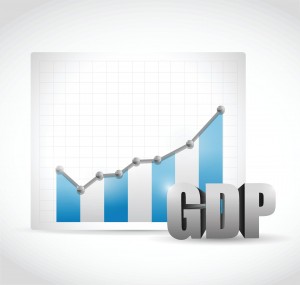
Dutch financial giant ING Bank this week said that most indications pointed to economic growth falling short of the administration’s scaled-up target for the year.
“I’m a bit worried about the bottlenecks in government spending,” said Joey Cuyegkeng, ING’s economist based in Manila.
He cited lackluster spending in May, which was the second dip in government disbursements in less than a year. The first one came in November due to the halt of state disbursements in Visayas due to Supertyphoon “Yolanda” and corruption scandals that made the government stingier with its cash.
Gross domestic product (GDP) growth for 2014 is expected to slow down significantly to 5.9 percent from last year’s 7.2 percent. In the first quarter, growth was at a slower-than-expected 5.7 percent—a result mainly of infrastructure bottlenecks caused by the typhoon.
This year’s growth target was set at a higher range of 6.5 to 7.5 percent versus last year’s 6 to 7 percent. Actual growth in 2013 reached 7.2 percent, the second-fastest among major Asian markets.
In the April-to-June period, growth likely stayed subdued due partly to delays in the implementation of the state’s rehabilitation plan for Visayas.
The government ended the first five months of the year with a rare budget surplus of P8.5 billion due to a 4-percent dip in spending and a 12-percent improvement in revenue collections from a year ago.
Cuyegkeng said he remained hopeful that state spending could be accelerated in the coming months, citing recent pronouncements that economic managers were working to address bureaucratic bottlenecks.
“Hopefully that happens and I can revise [the growth forecast] upwards,” Cuyegkeng.
On the global front, ING was confident that the Philippines, like other emerging markets, were capable of weathering various challenges. These include geopolitical tensions in the Middle East, which could lead to higher fuel prices, as well as adjustments in the Federal Reserve’s monetary policy stance.
The US Federal Reserve started scaling back its multibillion-dollar quantitative easing program this year, which was widely seen as a precursor to rate increases in the near future.
“It’s the big preoccupation of global markets lately,” ING chief economist Mark Cliffe, who is in Manila this week, told the bank’s clients at a briefing yesterday.
Improving economic conditions in the United States was a tide that would lift all boats, he said, noting that the boost in demand for exports from emerging markets like the Philippines should lead to higher growth globally.

